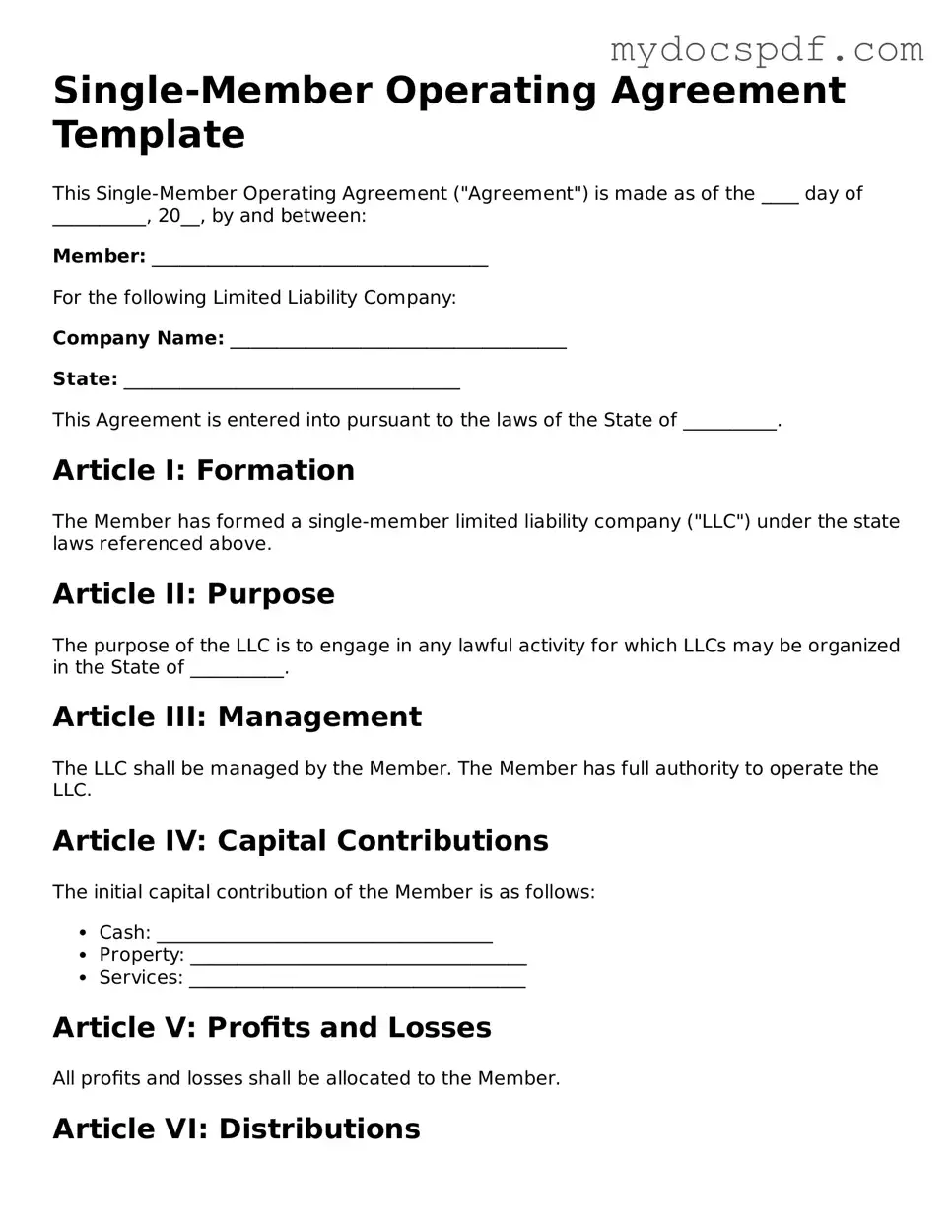Single-Member Operating Agreement Template
This Single-Member Operating Agreement ("Agreement") is made as of the ____ day of __________, 20__, by and between:
Member: ____________________________________
For the following Limited Liability Company:
Company Name: ____________________________________
State: ____________________________________
This Agreement is entered into pursuant to the laws of the State of __________.
Article I: Formation
The Member has formed a single-member limited liability company ("LLC") under the state laws referenced above.
Article II: Purpose
The purpose of the LLC is to engage in any lawful activity for which LLCs may be organized in the State of __________.
Article III: Management
The LLC shall be managed by the Member. The Member has full authority to operate the LLC.
Article IV: Capital Contributions
The initial capital contribution of the Member is as follows:
- Cash: ____________________________________
- Property: ____________________________________
- Services: ____________________________________
Article V: Profits and Losses
All profits and losses shall be allocated to the Member.
Article VI: Distributions
Distributions shall be made at the discretion of the Member.
Article VII: Record Keeping
The LLC shall maintain complete and accurate books and records as required by law.
Article VIII: Indemnification
The Member shall be indemnified for any acts performed on behalf of the LLC, except in cases of gross negligence or willful misconduct.
Article IX: Amendments
Any amendments to this Agreement must be in writing and signed by the Member.
Article X: Governing Law
This Agreement shall be governed by the laws of the State of __________.
In witness whereof, the undersigned Member has executed this Single-Member Operating Agreement as of the date first above written.
Signature of Member: ________________________________
Printed Name of Member: ________________________________
Date: ________________________________
